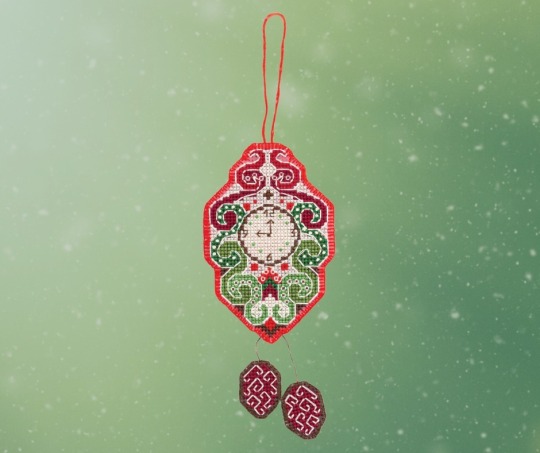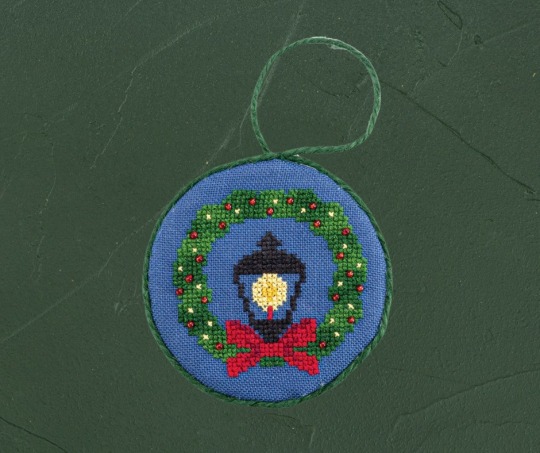#maria spiridonova
Explore tagged Tumblr posts
Text










Women’s History Meme || Virtually Unknown Women (7/10) ↬ Maria Aleksandrovna Spiridonova (1884 – 1941)
While the act is generally considered politically motivated, the true impetus behind the much-discussed January 1906 murder of Gavrila Luzhenovskii, chief advisor to the governor of Tambov, by Mariia Spiridonova, may have been something other than revolutionary sentiments. This assassination is particularly noteworthy because it was widely publicized and caused a great outcry in liberal society. According to antigovemment publications, Spiridonova, then a nineteen-year-old schoolgirl, killed Luzhenovskii to avenge his cruel treatment of peasants during the suppression of agrarian disorders in the Tambov province. According to a recent hypothesis, however, she was in fact originally motivated exclusively by personal considerations, and only subsequently couched her defense in revolutionary language on the advice of her liberal lawyer, in order to transform her case from a criminal matter to a political one. … Many mysteries still surround Spiridonova’s act and its motives, but whatever hypothesis is considered closest to the truth, much of what was stated about this case in the antigovernment press and by Spiridonova herself was deliberate misrepresentation of reality. For example, she admitted that she “could have been, but was not” raped by Cossack officers after her arrest, as was asserted by many liberal and left-wing newspapers. These newspapers also published letters allegedly written by Spiridonova that she later renounced as forgeries. — Thou Shalt Kill: Revolutionary Terrorism in Russia, 1894–1917 by Anna Geifman Two days later he was assassinated. This act of terror was supposed to disrupt the peace by provoking Germany to attack Russia. Like the terrorists’ bombs of the nineteenth century, it was also meant to spark a popular uprising against the regime. The decision to assassinate Mirbach had been taken by the Left SRs on the evening of the 4th, after the first session of the Congress, when it became clear that they could not win the majority they needed to bring about a change in the government’s pro-German and anti-peasant policies. A Left SR motion of no-confidence in the Bolsheviks—designed to win the support of the Left Communists—had been defeated, and the Left SRs had walked out. Spiridonova who despite her genteel appearance had never wanted for terrorist verve — masterminded Mirbach’s murder. She recruited Yakov Bliumkin, a Left SR Chekist suitably placed in charge of counter-espionage against the Germans, and his photographer, Nikolai Andreyev, to do the bloody deed. … But the Left SRs showed no inclination to press home their military advantage. They were much less interested in seizing power themselves than they were in calling for a popular uprising to force the Bolsheviks to change their policies. The Left SRs had no idea where this uprising would end up: they were happy to leave that to the ‘revolutionary creativity of the masses’. They were the ‘poets of the revolution’ and, like all poets, were anarchists at heart. At every stage of their relationship with the Bolsheviks, the Left SRs had been outsmarted by them; and even now, when they had them at their mercy, they soon lost the upper hand. Instead of marching on the Kremlin, the Left SR leaders went to the Bolshoi Theatre, where the Soviet Congress was in session. Spiridonova gave a long and characteristically hysterical speech denouncing the Bolshevik regime. Yet while she spoke the guards in charge of security at the congress surrounded the building and sealed off all the exits. The Bolshevik delegates were allowed to leave but all the others were arrested. The Left SRs had walked into a trap. — A People’s Tragedy: A History of the Russian Revolution by Orlando Figes
#women's history#maria spiridonova#russian history#european history#history#19th and early 20th#nanshe's graphics
8 notes
·
View notes
Text

Maria Spiridonova
#Maria Spiridonova#I love her#she was stupid but so is everyone#I want to learn Russian to talk to her ghost
1 note
·
View note
Text
Maria Spiridonova

Maria Spiridonova, rivoluzionaria russa dalla volontà inossidabile, ha trascorso la maggior parte della sua vita in esilio e in carcere, sia sotto il regime zarista che sotto quello sovietico.
Assieme ad Aleksandra Kollontaj, è stata l’unica donna a svolgere un ruolo davvero di primo piano durante la rivoluzione.
Nata a Tambov il 16 ottobre 1884, in una famiglia nobile di provincia che le aveva permesso di istruirsi, era anche a studiare odontoiatria a Mosca prima che la morte del padre e la tubercolosi che l’aveva afflitta, la costrinsero a tornare a casa e cercarsi un impiego.
Si era avvicinata al Partito Social Rivoluzionario sin da giovanissima e aveva preso parte alle giornate social rivoluzionarie del 1905 che l’hanno vista andare in prigione per la prima di tante volte.
La repressione di quei moti fu brutale e compagni di lotta furono spietatamente massacrati dai cosacchi.
Aderì, per questo, all’ala combattente del PSR per eliminare uno dei responsabili della sicurezza che aveva represso nel sangue gli scioperi agrari. Dopo averlo seguito per lungo tempo, travestita da studentessa, gli aveva sparato cinque colpi di pistola che lo avevano ammazzato.
Arrestata, subì torture e sevizie da parte delle forze dell’ordine senza mai rivelare i nomi dei suoi complici. Venne condannata a morte con sentenza poi commutata nei lavori forzati a vita in Siberia.
La sua lettera, pubblicata sul giornale liberale di San Pietroburgo Rus’, in cui raccontava dell’orribile trattamento ricevuto, scosse l’opinione pubblica progressista che la trasformò in un’icona del movimento rivoluzionario.
Un vero e proprio culto si diffuse per la Russia, i contadini di Tambov offrivano preghiere per la sua salute, il suo ritratto si trovava nelle case accanto alle icone sacre e intere folle si radunavano per vederla passare durante i trasferimenti in treno da un carcere all’altro. Addirittura a Londra, venne raccolto un cospicuo fondo destinato a finanziare la sua possibile fuga dalla prigione.
Dopo dieci anni di detenzione, insieme ad altre cinque rivoluzionarie, il cui gruppo è passato alla storia come šestërka (il sestetto), venne liberata nel 1917, in seguito all’amnistia decretata dopo la rivoluzione di febbraio.
Diventata delegata al Terzo Congresso Nazionale del partito, si era schierata con l’ala sinistra estrema che si alleò brevemente con i bolscevichi dopo la rivoluzione d’ottobre.
Figura di primo piano in politica, grazie al suo carisma, alla sua fama e alle sue abilità oratorie, venne eletta nel Soviet locale e nel Comitato Esecutivo dei soviet contadini.
In rottura col PSR di cui criticava la presenza nel governo borghese provvisorio, aveva fondato il Partito Social Rivoluzionario di Sinistra (PLSR) che rimase nel II Congresso dei Soviet.
Gli argomenti che portava avanti erano: fine della guerra, terra ai contadini, abolizione della pena di morte e potere ai Soviet, e le propagandava con efficacia nei periodici sui quali scriveva come Terra e libertà, La bandiera del lavoro e Il nostro cammino.
Nel novembre del 1917 venne eletta Presidente del Congresso dei Deputati dei Contadini, determinando l’ingresso del soviet contadino nel Comitato Esecutivo Centrale Panrusso saldamente in mano ai bolscevichi. Il fatto che Lenin avesse riconosciuto che il Decreto sulla terra del 26 ottobre 1917, fosse un progetto fortemente voluto dai socialisti rivoluzionari di sinistra fu sufficiente per convincerla a trovare un accordo di governo con i bolscevichi.
Era stata la candidata della sinistra alla presidenza dell’Assemblea costituente, insediatasi il 5 gennaio 1918, ma venne sconfitta dal centrista Cernov.
Era stata alla guida della Sezione contadina per poi far parte del Comitato Rivoluzionario di Difesa di Pietrogrado.
La rottura definitiva con Lenin avvenne in seguito alle requisizioni forzate di derrate alimentari nelle campagne, autorizzate dal governo, compiute tra abusi e violenze sui contadini.
L’opposizione divenne crescente e il 6 luglio 1918 due militanti socialrivoluzionari uccisero l’ambasciatore tedesco Mirbach-Harff. Lei si assunse subito la responsabilità politica dell’atto e il 7 luglio il PLSR tentò una insurrezione contro i bolscevichi, arrivando ad arrestare per poche ore il capo della Ceka.
A capo della rivolta, si presentò al teatro Bolshoj, dove si stava svolgendo il Congresso dei Soviet, per pronunciare un discorso di attacco al regime bolscevico in difesa della creatività rivoluzionaria delle masse. Lenin la fece nuovamente arrestare.
Condannata a un anno di carcere e amnistiata poco dopo, aveva continuato la sua attività politica, cercando di riunire il partito. Accusava i bolscevichi di aver delegittimato i soviet imbrigliandone la libertà e di aver tradito gli ideali di emancipazione della Rivoluzione d’Ottobre.
Nel febbraio 1919 fu nuovamente arrestata, dichiarata inferma di mente e rinchiusa in una caserma-ospedale del Cremlino da dove di lì a poco fuggì, iniziando una fase di clandestinità spacciandosi per una contadina.
Il 6 ottobre 1920 la Ceka la arrestò nuovamente, scovandola in un appartamento malata di tifo. Venne sottoposta, per volere di Trockij ad un regime carcerario piuttosto duro, per poi essere trasferita in un istituto psichiatrico, venendo liberata l’anno successivo e affidata alla custodia dei vertici dell’ex PLSR fedeli alla linea bolscevica, purché non si occupasse più di attività politica.
Nel 1923, probabilmente per un tentativo di fuga all’estero, venne nuovamente arrestata e mandata in esilio alle periferie dell’Unione Sovietica, a Samarcanda e poi a Tashkent.
Non svolse più attività politica ma creò una rete di contatti per aiutare gli ex compagni esiliati a vivere dignitosamente.
In questo periodo sposò Andreij Majarov, ex dirigente social rivoluzionario anche lui al confino.
Con l’inasprirsi delle purghe staliniane, venne esiliata a Ufa, in Bashkiria, dove lavorava nella banca agricola locale e organizzava un piccolo collettivo casalingo con il consenso del ministero dell’interno.
Nel 1937, con le nuove purghe venne nuovamente arrestata e fu portata a Mosca nella prigione di Oriol per scontarvi 25 anni di carcere, dopo un processo sommario con l’accusa di cospirazione, attività controrivoluzionarie e sovversive per costruire una Repubblica Social Rivoluzionaria in Bashkiria.
L’11 settembre 1941, Stalin la fece fucilare insieme ad altri 150 prigionieri politici e seppellire in una fossa comune.
Ultimo oltraggio per lei che, fino all’ultimo, si era sempre dichiarata contraria alla pena capitale.
È stata una donna pronta a tutto per difendere i suoi ideali.
Ha passato più di trent’anni, dei cinquantasei vissuti, in carcere o in esilio. Sempre di salute cagionevole, non si è risparmiata nel suo attivismo.
Ha guidato le folle con i suoi discorsi e i suoi scritti. È stata osannata come una martire. È stata accusata di essere pazza e, infine, ammazzata.
Soltanto nel 1992 sono cadute tutte le accuse nei suoi confronti ed è stata completamente riabilitata.
0 notes
Text
The Top Female Vaganova Graduates of the Past Ten Years: Then and Now (Part I)
2015 - Renata Shakirova (Mariinsky Principal)
This was actually a tough one since 2015 was such an amazing year for graduates, especially considering that both the ninth year and eighth years graduated together. But in the end, Shakirova just seemed to me the most professional and technically strong in 2015! A star then and now!
Role I'd love to see her début: The Sylph
Special Mentions: Anastasia Lukina, Nika Tsvikhtaria, Elena Solomyanko
2015 (Laurencia at Graduation):
youtube
2024 (Dulcinea Variation in Don Quixote) :
youtube
2016 - Alyona Kovalyova (Bolshoi Principal)
This one was a no-brainer. While Maria Ilyushkina is a rising star now, her technique and strength in her Vaganova days were still developing while Kovalyova was the clear featured star graduate. After being rejected from Mariinsky for being too tall, she was offered a contract with the Bolshoi and quickly rose through the ranks, including spending only one year in the corps de ballet!
Role I'd love to see her début: Anna Karenina
Special Mentions: Maria Ilyushkina, Laura Fernandez-Gromova
2016 (Raymonda in Grand Pas shortly after graduating):
youtube
2024 (Nikiya in La Bayadère):
youtube
2017 - Eleonora Sevenard (Bolshoi Principal):
Another obvious choice, Sevenard was the clear stand-out. She was accepted into both the Mariinsky and the Bolshoi, before choosing the Bolshoi! She spent two years in the corps but was given soloist and principal opportunities right off the bat, including debuting as Masha in the Nutcracker in her first season. She was promoted to principal in 2023!
Role I'd love to see her début: Aurora
Special Mentions: Vlada Borodulina
2017 (Fairy Doll during graduate year):
youtube
2024 (Kitri in Don Quixote):
youtube
2018 - Maria Khoreva (Mariinsky First Soloist)
2018 was another year like 2015 with tons of amazing graduates. However, the graduate who garnered the most attention before and after graduation and who finished at the top of the class is Maria Khoreva. At only eighteen her technique was shockingly close to flawless and only two months into her first season she was promoted to first soloist! Khoreva has not be dancing for most of the past two seasons due to injury, but she is finally returning to the Mariinsky stage at the start of this season!
Role I'd love to see her début: Parasha (Bronze Horseman)
Special mentions: Maria Bulanova, Anastasia Nuikina, Daria Ionova, Anastasia Petushkova, Biborka Lendvai, Anita Voroshilova
2018 (Paquita shortly after her graduation):
youtube
2023 (Odile in Swan Lake last year):
youtube
2019 - Alexandra Khiteyeva (Mariinsky First Soloist)
Alexandra Khiteyeva was by far the strongest graduate of 2019. She had been featured in Vaganova graduation performances since her sixth year. After joining the Mariinsky, her initial progress was slowed due to COVID, but after four years in the Corps she was promoted, first to Second Soloist and just recently to First Soloist!
Role I'd love to see her début: Juliet
Special mentions: Svetlana Savelieva, Yulia Spiridonova
2019 (Paquita at graduation):
youtube
2023 (Cristina in Paquita):
youtube
#Youtube#ballet#vaganova#mariinsky#bolshoi#renata shakirova#alyona kovalyova#eleonora sevenard#maria khoreva#alexandra khiteyeva
30 notes
·
View notes
Text
Sofia Perovskaia (1853-1881).
Member of Narodnaïa Volia. Regicide of Tsar Alexander II (1881).
Warning:
My day (not very good day) will end with the publication of a short post dedicated to one of the historical heroines for whom I have a lot of sympathy: Sofia Perovskaia. I had mentioned her only once in this post : https://www.tumblr.com/sensitiveuser/766870279166279680/letter-from-emma-goldman-1923-about-louise?source=share.
I am currently preparing others for you, which I will publish tomorrow and this weekend. Little secret : I didn't think I'd be here tonight (not just on Tumblr)...
I haven't finished introducing the characters mentioned in Emma Goldman's letter. I will also introduce Maria Spiridonova, I promise you...

Sofia Perovskaia (1853-1881) came from an aristocratic family. Her father was the governor of Saint Petersburg. Young woman abhorring the aristocratic society in which she grew up, she decided to betray her family and her social class, and join the camp of the revolutionaries. Fleeing her family, she settled in a modest apartment.
When it was founded (1879), the Narodnaia Volia organization defined the assassination of Tsar Alexander II as its primary objective. Armed struggle and terrorist actions (propaganda by deed) are the foundation of the organization. However, Narodnaia Volia does not intend to take power after the fall of the Russian Empire. Its only aim is to destroy tsarism, form a provisional government and elect a constituent assembly.
The members of the Executive Committee (including Andrei Jeliabov, Sofia's companion), in order to succeed in killing the tsar, decide to resort to the bomb. In September 1879, the Executive Committee proclaims itself "a secret society completely autonomous in its actions". The revolutionaries of Narodnaia Volia attempt five times to assassinate Alexander II, between November 1879 and August 1880. The first attack was prepared by Vera Figner, Alexander Kvyatkovsky and Nikolai Kibalchitch (one of the accused in the trial of the 193). The second attack was planned by Andrei Jeliabov, on the railway line linking Crimea to Kharkov.
Following the failed attempts, the comrades of Narodnaya Volya prepare a new attack… hoping, this time, not to miss their shot !
Sofia Perovskaïa, Andrei Jeliabov, Nicolas Kibaltchich, Nicolas Kletochnikov, Alexander Mikhailov, form a real club of five, five brave militants determined to meticulously plan a new attack. It is a question of succeeding in the attack by all means ! The five comrades begin by observing the movements of the tsar. The observation reveals two obligatory passage points, whatever the route taken by the tsar.
The executive committee decides to attack these two locations simultaneously, and meticulously prepares the attack. The five comrades dig an underground tunnel from a small house to Nevsky Prospect. They buried a mine there that would explode when the Tsar passed by. If this failed, Andrei Jeliabov would intervene, aided by a dagger and a revolver !
Unfortunately, on February 27, 1881, Andrei Jeliabov was arrested and sent to Nevsky Prospect. Sofia was now placed in charge of organizing the attack. She continued the plan for the attack. She was joined by Nikolai Ivanov Rysakov (who would throw the first bomb), Ignati Joakimovich Grineviski (who would throw the second), Timofei Mikhailovich Mikhailov (third bomb), Ivan Panteleimonovich Emelianov (fourth bomb). The bombs were prepared in Vera Figner's apartment.
On March 1, 1881, Alexander II took his usual route, between the Makhaylovski riding school and the Catherine Canal. Sofia Perovskaya gave the signal for the attack (using a handkerchief). The first bomb did not hit the Tsar, but there were a few injuries, and Rysakov was arrested. The second explosion, this time, resulted in a success: Alexander II died. But the explosion also cost Grineviski's life.
A few weeks after the assassination attempt, Sofia was arrested. On April 3, 1881, she was hanged together with Andrei Jeliabov on Semyonovsky Square.
2 notes
·
View notes
Text






























Designs from the 2023 Ornament Issue of Just CrossStitch magazine.
Comfort & Joy designed by Deborah Booth of My Big Toe Designs
Christmas Eve designed by Elizabeth Talledo of damesoftheneedle
Festive Ball designed by Sara Louise Greer of wickhamcottage
Gentle Glow designed by Cissy Bailey Smith of gentle_pursuit
Gingerbread Row designed by Susan Powell of ardithdesign
Happy Holiday Sampler, designed by Wendy Peatross of From the Heart - NeedleArt by Wendy (wendypeatross)
Winter Wonderland designed by Patricia Bage of Patricia Ann Designs
Simple Joys designed by Kristen Stoltzfus Clay of verityvintagestudio
White Christmas designed by Julia Rosenberg of cottonpixels
Time for Christmas designed by Corina Ciocanu of happyxcraft
Christmas Chaos designed by Maria Warmke of stitcherhood_cross_stitch
Woodland Holiday designed by Nicole LaBranche of spot_colors
Have a Mod Christmas designed by Sunny Lofstrom of three_tiny_owls
Poinsettia Fairy designed by Kathleen Berlew of kberlew
Making Christmas Bright designed by Karen Bowen of kebstudiocreations
Decorating the Tree designed by Judith Kringle
Snow Deer designed by Karen Kirk of foxandrabbitdesigns
Mr. & Mrs. designed by Annie Craft of dirtyanniex
Frost Snow Globe designed by Laure Fontaine of Laine et Eau
Ready for Christmas designed by durenejonescrossstitch
Pink Poinsettia designed by Cyndy Young of luhustitches
Painted Leaves designed by Kate Spiridonova of katestitcher
Believe designed by Karen Kluba (kare.kluba) of Rosewood Manor
A Star for the Tree designed by Cassandra Cavalca Conforti of cassandra_fairywoolinthewood
Blackwork Christmas designed by Liz Almond of Blackwork Journey
Gingerbread Row, designed by Susan Powel of Laurel Susan Studio LLC
Vintage Trees, designed by Allison Petersen of cozycabinstitching
Joy to the World, designed by Olena Khirkh-Yalan of living.on.the.rainbow
Ice Skating Joy designed by Susan O'Bryant of sweetwingstudio
Be Merry designed by Eirinn Norrie of tangled.threads.and.things
7 notes
·
View notes
Photo

Maria Spiridonova, left-wing revolutionary who opposed the Bolsheviks.
6 notes
·
View notes
Photo

Operation “Pigsty” (“Condoning Terrorism”) Alexander Merkulov (aka Aleksandr Peĵiĉ), pictured here, is the sixteenth person in Russia to face prosecution for "condoning terrorism"—that is, for publicly mentioning in print (virtual or otherwise) …
#"condoning terrorism"#Aleksandr Peĵiĉ#Alexander Merkukov#Alexander Skobov#Chechnya#Edén Pastora#FSB#Harmodius and Aristogeiton#Khava Barayeva#Maria Spiridonova#monument#Operation Pigsty#People&039;s Will (Narodnaya Volya)#Russian National Guard#Socialist Revolutionary Party#suicide bombing#Svetlana Prokopyeva#terrorism#VKontakte
0 notes
Text

Ready for Khorkina's show tomorrow!
#maria paseka#daria spiridonova#vladislava urazova#viktoria listunova#angelina melnikova#team russia
28 notes
·
View notes
Text
FUCK IT UP
72 notes
·
View notes
Photo

cute 🥺
9 notes
·
View notes
Text
Guys I think I may be the only person in the world with an autistic obsession with Maria Spiridonova
0 notes
Text

Posted by antonstolyar on insta
#aliya mustafina#alla sosnitskaya#anna rodionova#daria spiridonova#maria kharenkova#team russia#2014 i guess
26 notes
·
View notes
Photo







🇷🇺 Team Russia at the 2019 World Artistic Gymnastics Championships
#team russia#gymternet#gymedit#angelina melnikova#daria spiridonova#lilia akhaimova#anastasia agafonova#aleksandra shchekoldina#maria paseka#artur dalaloyan#nikita nagornyy#ivan stretovich#denis ablyazin#david belyavskiy#m*#m: gymnastics#m: wag#m: mag#m: stuttgart 2019#m: gif
236 notes
·
View notes
Photo


2014 → 2019
69 notes
·
View notes